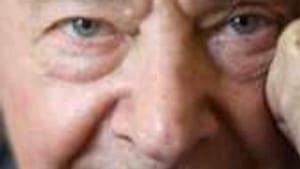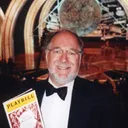Stay in the Loop
BSR publishes on a weekly schedule, with an email newsletter every Wednesday and Thursday morning. There’s no paywall, and subscribing is always free.
Who can argue with FrÓ¼hbeck?
Orchestra's "Carmina Burana'

Rafael Frühbeck de Burgos looks frail these days, and older than his 79 years, but he conducted Carmina Burana from memory this weekend, and it was a gorgeously persuasive interpretation.
Frühbeck takes Karl Orff's massive cantata at a slow and stately pace, and who can argue with him? After all, he studied with the composer, and in some respects he knows the piece better than Orff himself.
(As Orff's student, I'm told, Frühbeck de Burgos once spotted some apparent mistakes in the Carmina score; the composer agreed and subsequently published a revised score that incorporated Frühbeck's suggestions.)
If you think that slow tempi would rob this piece of its excitement, you'd be mistaken. The rhythms were propulsively insistent and the steady pace helped build stirring climaxes. From hushed pianissimi to thundering explosions, the choruses and orchestra displayed the widest possible range of volume.
Emblem of rebellion
All of which is appropriate to Orff's Latin text. You and I may associate Latin with Catholic masses or Caesar's descriptions of Gaul, but Orff used that language for drinking songs and paeans to sex and debauchery.
This music has been used in dozens of films (e.g., Excalibur, The Hunt For Red October, Shrek), although not the movie that would be most appropriate: Groundhog Day. Its repeated riffs make Carmina Burana an emblem of rebellion. Like Benny Goodman's band in the 1930s or rock 'n' roll in the '50s, Orff's reiterated patterns seem designed to disturb conservative listeners.
In this performance the Philadelphia Orchestra's 100-plus musicians were abetted by the large Philadelphia Singers Chorale, the American Boychoir and three solo singers. All three soloists managed the wide-ranging music expertly— the tenor's part reaches the D above high C, the soprano needs a voice like the Queen of the Night, and the baritone's range must extend from bass notes to falsetto, feminine passages.
Body language
Beyond the music, the soloists emoted their texts with facial expression and body language. Tenor Nicholas Phan was forlorn as he sang about the swan who's about to be killed and served for dinner. Soprano Erin Morely was sensuous and baritone Hugh Russell lascivious as they interpreted their parts.
For the program's opening piece— Haydn's First Symphony— the orchestra was reduced to fewer than 40 players without apparent loss of its bite and energy. (The same applies to Frühbeck, who I'm told memorized this score on his plane ride to Philadelphia.) Then the Orchestra's first trumpet chair, David Bilger, tossed off rapid filigree while bringing poetry to the softer lyric moments of Hummel's Trumpet Concerto.
Frühbeck takes Karl Orff's massive cantata at a slow and stately pace, and who can argue with him? After all, he studied with the composer, and in some respects he knows the piece better than Orff himself.
(As Orff's student, I'm told, Frühbeck de Burgos once spotted some apparent mistakes in the Carmina score; the composer agreed and subsequently published a revised score that incorporated Frühbeck's suggestions.)
If you think that slow tempi would rob this piece of its excitement, you'd be mistaken. The rhythms were propulsively insistent and the steady pace helped build stirring climaxes. From hushed pianissimi to thundering explosions, the choruses and orchestra displayed the widest possible range of volume.
Emblem of rebellion
All of which is appropriate to Orff's Latin text. You and I may associate Latin with Catholic masses or Caesar's descriptions of Gaul, but Orff used that language for drinking songs and paeans to sex and debauchery.
This music has been used in dozens of films (e.g., Excalibur, The Hunt For Red October, Shrek), although not the movie that would be most appropriate: Groundhog Day. Its repeated riffs make Carmina Burana an emblem of rebellion. Like Benny Goodman's band in the 1930s or rock 'n' roll in the '50s, Orff's reiterated patterns seem designed to disturb conservative listeners.
In this performance the Philadelphia Orchestra's 100-plus musicians were abetted by the large Philadelphia Singers Chorale, the American Boychoir and three solo singers. All three soloists managed the wide-ranging music expertly— the tenor's part reaches the D above high C, the soprano needs a voice like the Queen of the Night, and the baritone's range must extend from bass notes to falsetto, feminine passages.
Body language
Beyond the music, the soloists emoted their texts with facial expression and body language. Tenor Nicholas Phan was forlorn as he sang about the swan who's about to be killed and served for dinner. Soprano Erin Morely was sensuous and baritone Hugh Russell lascivious as they interpreted their parts.
For the program's opening piece— Haydn's First Symphony— the orchestra was reduced to fewer than 40 players without apparent loss of its bite and energy. (The same applies to Frühbeck, who I'm told memorized this score on his plane ride to Philadelphia.) Then the Orchestra's first trumpet chair, David Bilger, tossed off rapid filigree while bringing poetry to the softer lyric moments of Hummel's Trumpet Concerto.
What, When, Where
Philadelphia Orchestra: Haydn, Symphony No. 1 in D major; Hummel, Concerto for Trumpet and Orchestra in E major; Orff, Carmina Burana. David Bilger, trumpet; Erin Morely, soprano; Nicholas Phan, tenor; Hugh Russell, baritone; Philadelphia Singers Chorale; American Boychoir; Rafael Frühbeck de Burgos, conductor. February 15-16, 2013 at Verizon Hall, Kimmel Center, Broad and Spruce Sts. (215) 893.1999 or www.philorch.org.
Sign up for our newsletter
All of the week's new articles, all in one place. Sign up for the free weekly BSR newsletters, and don't miss a conversation.
 Steve Cohen
Steve Cohen